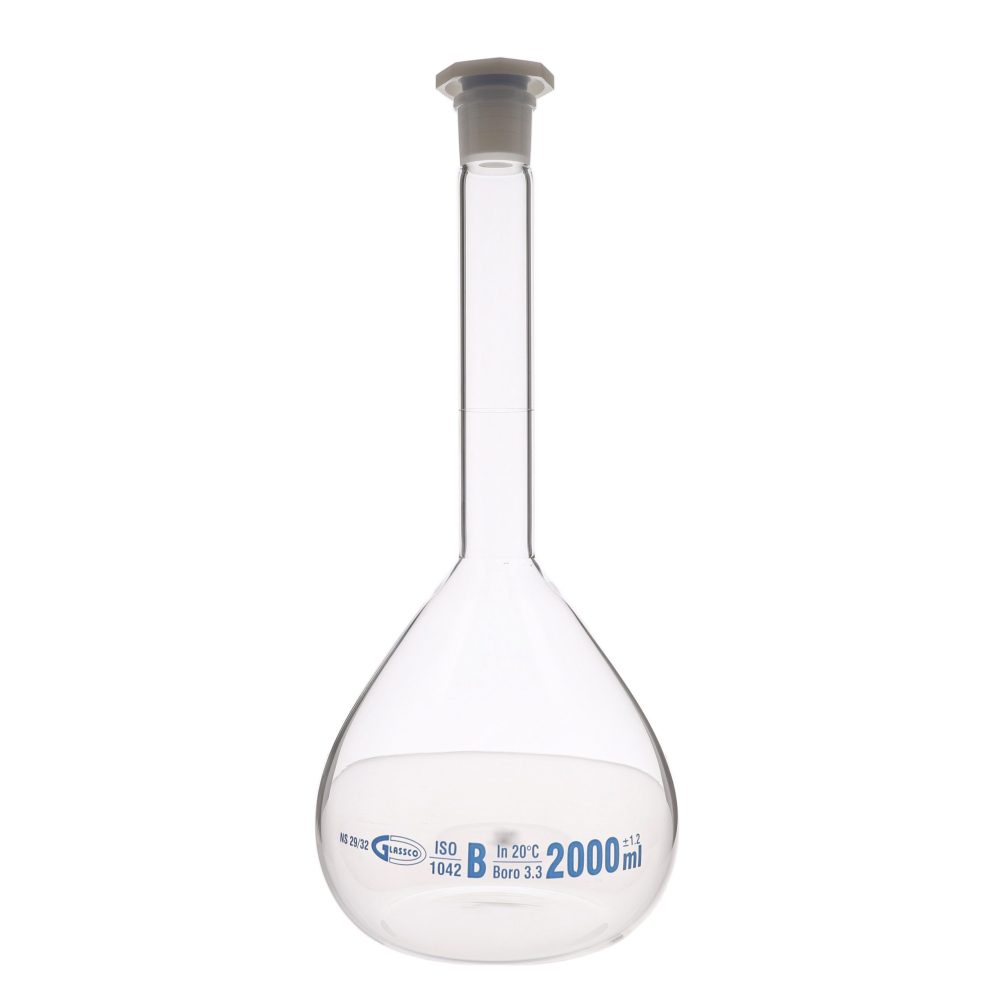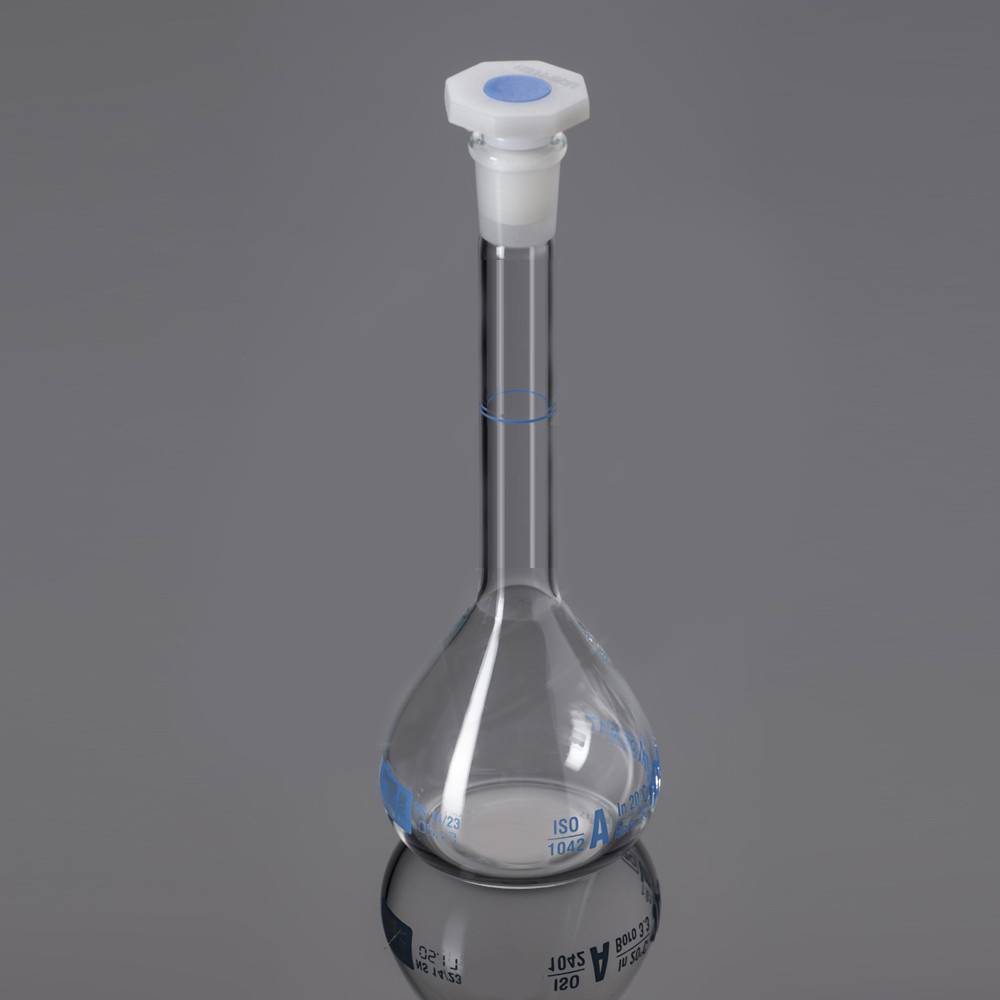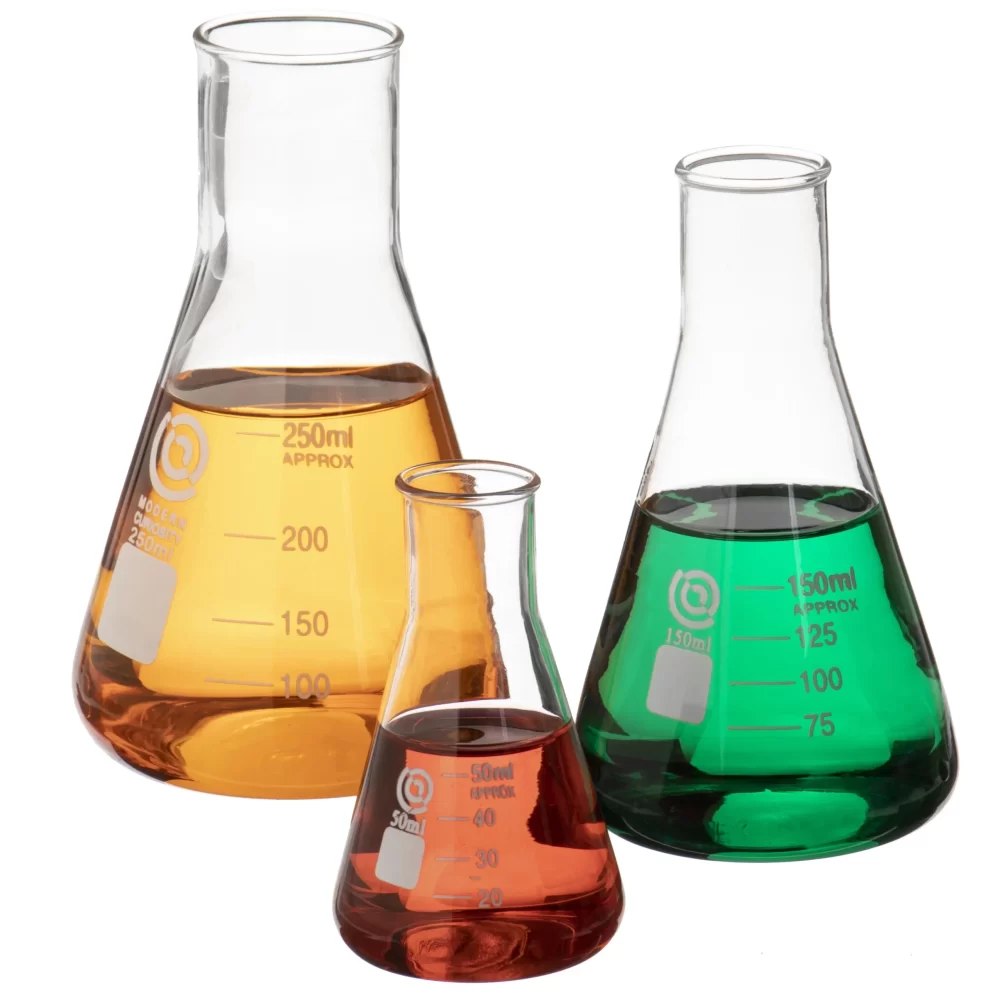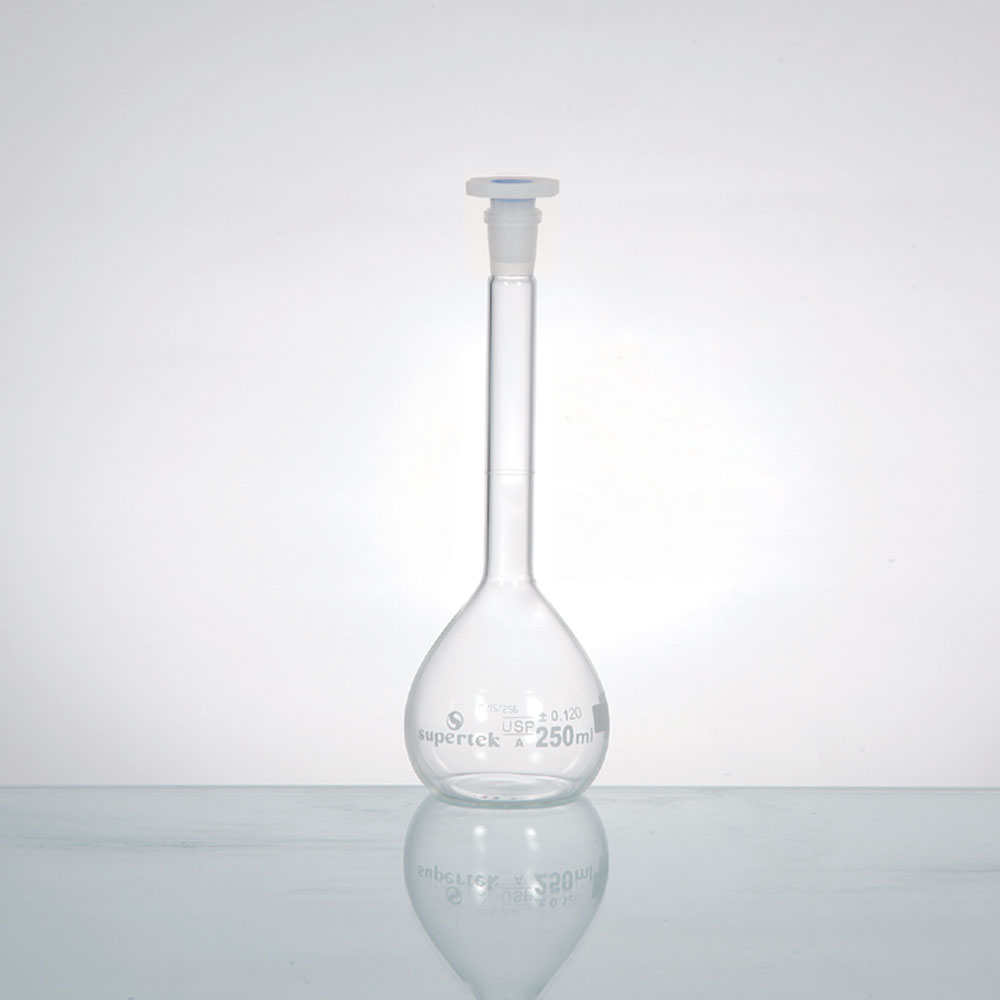Introduction
Laboratory glassware plays a pivotal role in scientific experiments. Among the many tools available, The Erlenmeyer Flask vs Beaker .Each serves a unique purpose, making it essential for students, educators, and researchers to understand their distinctions. Knowing when to use an Erlenmeyer flask versus a beaker can significantly impact the efficiency and accuracy of experiments.
In this article, we will delve into the specifics of both types of glassware. We’ll cover their designs, typical uses, advantages, disadvantages, and safety considerations. By the end of this piece, readers will clearly understand which glassware to choose for their specific needs in a laboratory setting.
Overview of Erlenmeyer Flasks
An Erlenmeyer flask is a type of laboratory glassware known for its distinct conical shape. This design features a wide base that narrows at the neck, providing stability while allowing for easy mixing.
Features and Design
The typical Erlenmeyer flask is made of glass or plastic and is marked with volume measurements. Common volumes include 125 mL, 250 mL, and 500 mL, with larger variants available for more substantial experiments. Its wide opening enables easy access for adding substances, while the narrow neck minimizes evaporation.
Typical Uses
Erlenmeyer flasks are ideal for mixing solutions. Their shape allows for thorough mixing via swirling, making them suitable for chemical reactions that require agitation. They are also useful for heating liquids over a Bunsen burner, as the shape helps distribute heat evenly. Additionally, the design is excellent for titration experiments, where you need controlled mixing.
In laboratories, you will often find Erlenmeyer flasks used in chemistry, biology, and other scientific disciplines. As they help prevent spills, they are a favorite among educators for experiments requiring movement or agitation.

Overview of Beakers
A beaker is another essential piece of laboratory glassware. Beakers have a cylindrical shape with a flat bottom, making them easier to pour from than Erlenmeyer flasks.
Features and Design
Beakers are typically made of glass but can also be constructed from plastic. They come in various sizes, usually ranging from 50 mL to 3 L. Each beaker features measurement markings along the side to indicate volume, but unlike Erlenmeyer flasks, they are generally not as precise for measuring small amounts.
Common Use Cases
Beakers are versatile and found in almost every laboratory setting. Their primary purpose is to hold, mix, and heat substances. While they allow for straightforward pouring, beakers are not ideal for swirling due to their wide opening. Instead, they excel in simple liquid measurements and are often used to combine chemicals or solutions in larger volumes.
In educational settings, beakers are frequently used during basic experiments and demonstrations. Their ease of use makes them perfect for students learning fundamental scientific concepts.

Key Differences Between Erlenmeyer Flasks and Beakers
When considering Erlenmeyer flask vs beaker, several key differences emerge. Understanding these distinctions can help determine which type of glassware is best suited for a given task.
Shape and Design
The most apparent difference is the shape. Erlenmeyer flasks have a tapered, conical shape that allows for mixing by swirling without spilling. In contrast, beakers have a straight, cylindrical design that makes them easier to fill and pour, but less effective for vigorous mixing.
Volume Measurement
Both glassware types feature volume markings, but beakers provide less precision. Erlenmeyer flasks usually offer more accurate measurements, especially for smaller volumes. They are ideal for measuring chemicals that require precision.
Mixing Capabilities
Erlenmeyer flasks are designed for mixing solutions effectively. Their narrow neck helps contain splashes, making them excellent for swirling. Conversely, beakers are better for stirring liquids but can lead to spills if not handled carefully.
Ease of Use
Beakers are easier to fill and pour due to their wide openings. This design makes them ideal for simple tasks, such as transferring liquids from one container to another. On the other hand, Erlenmeyer flasks may require more care when pouring, especially if the contents are agitated.

Advantages and Disadvantages
Both Erlenmeyer flasks and beakers have their advantages and disadvantages, making them suitable for different laboratory functions.
Advantages of Erlenmeyer Flasks
– Effective Mixing: The design allows for easy swirling, making it ideal for mixing solutions.
– Reduced Evaporation: The narrow neck minimizes evaporation during experiments, preserving samples.
– Stability: The broad base provides stability, preventing spills during vigorous mixing.
Disadvantages of Erlenmeyer Flasks
– Limited Pouring Accuracy: Pouring can be imprecise, especially if the flask is agitated.
– Size Restrictions: Generally, they are not used for large volume measurements due to their shape.
Advantages of Beakers
– Easy Pouring: The straight shape makes pouring easier, particularly for larger quantities.
– Versatility: Beakers can serve multiple functions, from mixing solutions to heating liquids.
– Quick Measurement: They allow for quick volume assessments with less precision required.
Disadvantages of Beakers
– Less Effective Mixing: They are not as efficient for mixing solutions as Erlenmeyer flasks.
– Increased Evaporation: The wide opening can lead to faster evaporation of volatile substances.
When to Use Each Type of Glassware
Knowing when to opt for an Erlenmeyer flask vs beaker can enhance the effectiveness of your experiments. Here are scenarios for each:
Ideal Uses for Erlenmeyer Flasks
– Titration: When titrating solutions, the ability to swirl without spills makes Erlenmeyer flasks ideal.
– Heat Retention: When heating liquids, using flasks helps minimize evaporation and enhances safety.
– Reactions Requiring Agitation: For any reaction that needs consistent mixing, the conical shape allows for swirling without unnecessary mess.
Ideal Uses for Beakers
– Simple Measurements: Use beakers for straightforward liquid measurement in general laboratory tasks.
– Heated Solutions: Beakers are suitable for heating solutions where vigorous stirring isn’t needed.
– Pouring Solutions: For transferring solutions between containers, beakers provide ease and precision.

Safety Considerations in Laboratory Glassware
Safety is paramount in laboratory settings, and knowing how to use glassware properly can reduce risks significantly. Here are some safety tips for both Erlenmeyer flasks and beakers:
1. Inspect Glassware Regularly
Before using any laboratory glassware, inspect it for cracks or chips. Damaged glassware can lead to breakage and potential spills, which could cause accidents.
2. Use Proper Heating Techniques
When heating liquids in an Erlenmeyer flask or a beaker, always use appropriate heat-resistant sources. Avoid direct flame unless the glassware is designed for such use. Instead, use hot plates or heat mantles when possible.
3. Handle with Care
Always handle glassware carefully to avoid tipping or dropping. Use appropriate clamps or holders when necessary, especially during reactions that require stirring or shaking.
4. Wear Personal Protective Equipment (PPE)
Always wear safety goggles, gloves, and lab coats when working with chemicals and glassware. This equipment can protect you from potential spills or splashes.
5. Know Your Chemicals
Be aware of the chemical properties you are working with. Some substances may react violently if mixed improperly, particularly in closed containers. Understand compatibility before conducting experiments.

Conclusion of Erlenmeyer Flask vs Beaker
Understanding the differences between Erlenmeyer flasks and beakers is essential for anyone involved in laboratory work. Both types of glassware serve unique purposes and come with their respective advantages and disadvantages.
Erlenmeyer flasks excel in mixing and minimizing evaporation, making them suitable for precise experiments. In contrast, beakers are more versatile for general tasks and easier for pouring.
By choosing the appropriate glassware based on your specific needs, you can ensure the success of your experiments. Whether you’re a student, educator, or professional, grasping the nuances of these essential tools will significantly enhance your laboratory skills. Remember to always prioritize safety and choose the appropriate equipment for your experiments.





